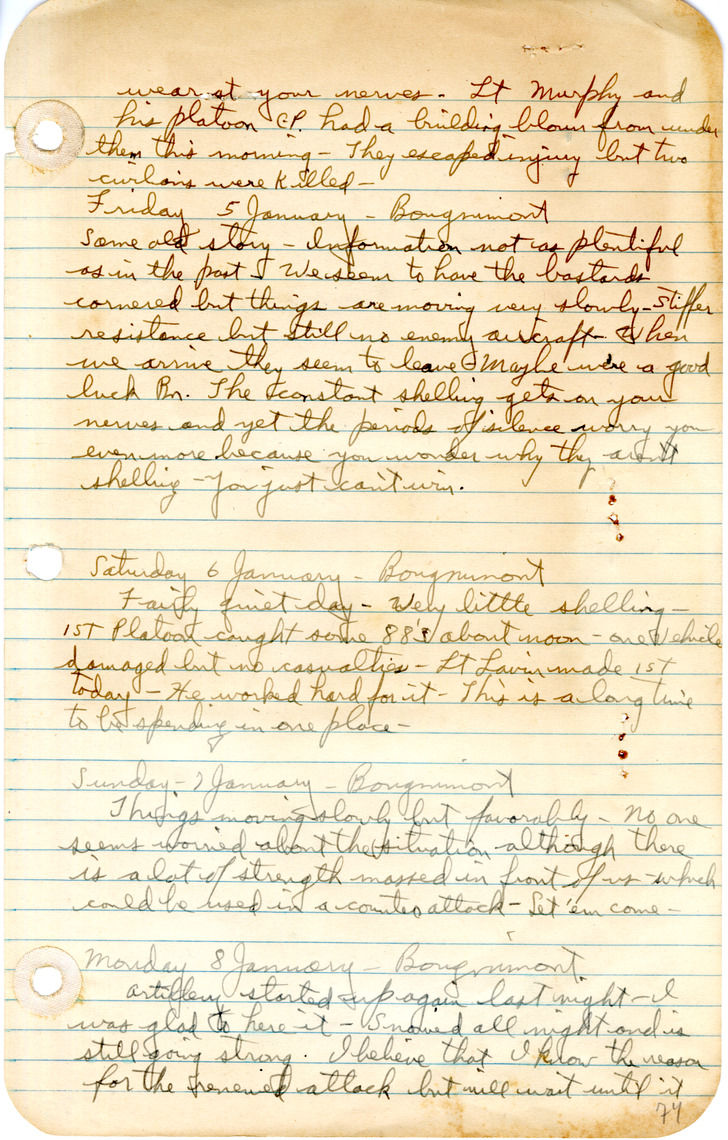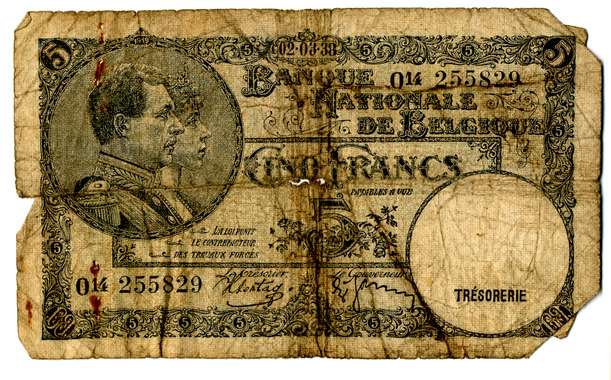[Continued from previous page] wear at your nerves. Lt. Murphy and his platoon C.P. had a building blown from under them this morning.1First Lieutenant William J. Murphy They escaped injury but two civilians were killed.
Friday, 5 January [1945] Bougnimont, [Belgium]
Same old story. Information not as plentiful as in the past. We seem to have the bastards cornered but things are moving very slowly. Stiffer resistance but still no enemy aircraft. When we arrive they seem to leave, maybe we’re a good luck Bn. The constant shelling gets on your nerves and yet the periods of silence worry you even more because you wonder why they aren’t shelling. You just can’t win.
Saturday, 6 January [1945] Bougnimont, [Belgium]
Fairly quiet day, very little shelling. 1ST Platoon caught some 88’s about noon‐ one vehicle damaged but no casualties. Lt. Lavin made 1st today.2Second Lieutenant Richard B. Lavin He worked hard for it. This is a long time to be spending in one place.
Sunday, 7 January [1945] Bougnimont, [Belgium]
Things moving slowly but favorably. No one seems worried about the situation although there is a lot of strength massed in front of us, which could be used in a counter attack. Let ‘em come.
Monday, 8 January [1945] Bougnimont, [Belgium]
Artillery started up again last night—I was glad to hear it. Snowed all night and is still going strong. I believe that I know the reason for the renewed attack but will wait until it is [continued on next page]



